Industrial Liquid Filter Selection Guide
Industrial liquid filter cartridges are an essential component in many industrial processes. They are used to remove contaminants and impurities from liquids, ensuring products have high quality and are safe to use. They also can be used to protect and extend the life of process machinery that uses liquid. Almost all process liquids are filtered at some point. With the number of applications and different types of filter cartridges available on the market, it can be challenging to select the right solution for your specific application. Optimizing filtration processes by selecting the optimal filter can lead to saving time and money on labor, equipment, and replacement filters. This blog post will discuss the factors to consider when selecting an industrial liquid filter cartridge.
Identify the Liquid to Filter
The filter cartridge you select is dependent on the liquid you are filtering. Different types of filter cartridges are designed for certain applications. The viscosity, chemical composition, temperature, pH, and concentration of the liquid impact the effectiveness and efficiency of the filter. For example, if the liquid is highly abrasive or corrosive it may be better to use a PTFE or polypropylene media. The same medias may apply to viscous fluids, but chemical compatibility is also an important factor in determining what media type is optimal. If you are unsure of the optimal filter for the liquid you are processing, please contact one of our filtration experts.
Determine the Filtration Requirements
The next step is to determine the requirements necessary for optimizing filtration. Consider the flow rate, particle size, and type of particles to be retained. All industrial liquid filters have a micron and efficiency rating. Industrial liquid filters can range in micron ratings from 0.2 up to 1000 microns. To give you some perspective the average thickness of copy paper is 100 microns. Liquid filters also have varying levels of efficiency and are typically classified as nominal and absolute rated. A nominal filtration rating means that 75%-80% of particulate will be captured at that specific micron rating. An absolute filtration rating captures near or above 99% of contaminants at the listed micron rating. Typically nominal filtration will be used upstream in the filtration process to capture larger particulate while absolute filters are used toward the end to capture smaller contaminants. For example, a higher micron-rated filter is likely suitable for capturing larger particulate without sacrificing service life and flow capacity. Choosing a micron rating that is too small upstream will certainly be efficient, but overall performance could be compromised.
Choose the Filter Type
Once you have determined the liquid and the filtration requirements you are now ready to select a type of filter. There are several types of filters available, including bag filters, high-flow filters, depth filters, pleated depth filters, and pleated membrane filters. Each filter type has its unique advantages and disadvantages. For example, pleated membrane filters are great for removing microorganisms but will clog quickly with larger particulate. On the other hand, high-flow and bag filters can filter high volumes of larger particulate without clogging rapidly. If you are unsure of the proper type of filter you need, contact Global Filter and our technical experts will be glad to help.
Consider the Filter Materials of Construction
The materials of construction of the filter are an important factor to consider when selecting a liquid filter. Consider the materials’ compatibility with the liquid and resistance to temperature and pressure. Materials can be incompatible with certain liquids. It is important to understand the basic properties of the fluid, such as the pH, concentration, fluid temperature, and expected exposure time. Also, certain materials of construction are more resistant to higher temperatures such as stainless steel. It is important to consider chemical and temperature capability when selecting a filter. Elevated temperatures can cause a breakdown of the filter materials and could compromise filter integrity, leading to issues downstream. Chemicals can also cause a breakdown if they are incompatible with the filter’s materials of construction and media.
Fit Filter into Existing System
Now that you have the proper filter in mind it is time to ensure the fit into your existing system. It will be important to select a filter that fits into your current vessel/housing. Proper fit will prevent the bypass of contaminants and ease the installation and replacement of filters. Key considerations with proper fit into your existing system are gaskets/o-rings and end cap configuration.
When selecting a gasket/o-ring the most important consideration are chemical compatibility, temperature, and service life.
Gaskets/O-Ring Types
Buna-N, which is nitrile-butadiene, is a standard option, it offers a good seal for many fluids but can be susceptible to corrosion from more aggressive chemicals. It is, however, resistant to petroleum-based fuels.
EPDM, or ethylene propylene offers excellent resistance to ozone and is commonly used in processes that are regulated by the FDA such as pharmaceuticals and food & beverage. They tend to hold shape and last for long service periods.
Silicone is great because it maintains shape and seal for long periods of time. They are effective across a wide range of temperatures (above 400°) and chemicals.
Teflon or polytetrafluoroethylene (PTFE) gaskets are extremely resistant to wear and chemicals. They offer the best resistance in a number of chemical processes.
Viton or fluoroelastomer offers an excellent seal and works well with gases, fuels, and many organic chemicals. It does well in high temperatures but low temperatures can cause hardening, negatively impacting the seal.
Overall, selecting the right gasket/o-ring is critical to ensure temperature and chemical compatibility while protecting your system from bypass. If you are unsure of the seal material you need, contact Global Filter’s technical experts.
Now, let’s discuss end caps. First, there are two different styles of cartridges: single open-ended (SOE) and double open-ended (DOE). SOE cartridge filters are sealed on one side of the cartridge to eliminate bypassing into the clean side. End caps for SOE elements are typically constructed of polypropylene. DOE cartridges are open on both ends and tend to be more commonly used. The two most common open ends of SOE elements are 222 and 226. A 222 has double o-rings and is sealed against a seat cup inside a filter vessel/housing. A 226 has double o-rings and locking bayonets to provide a positive seal while locking in place.
Cartridge Filter End Cap Types
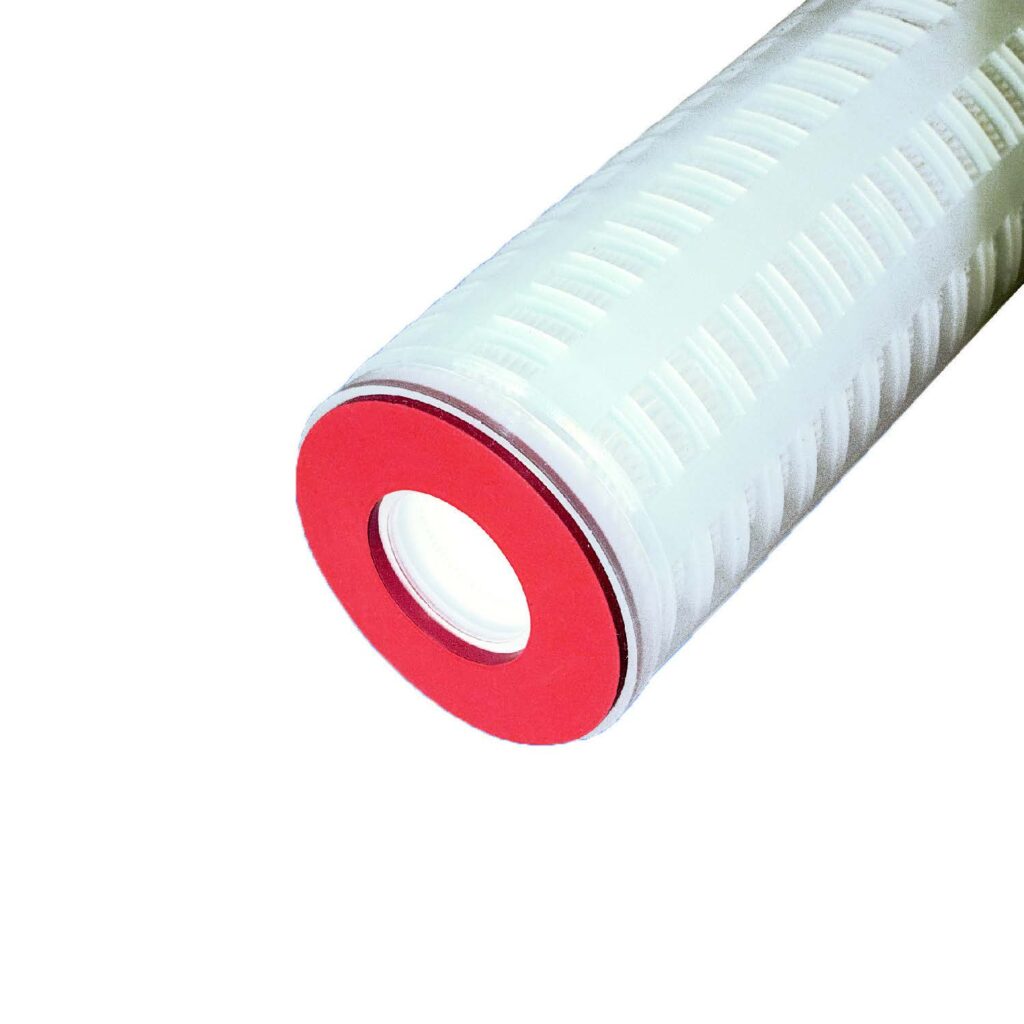
DOE Flat Gasket (Code 2 Filter Cartridge)
This cap type has openings on both ends of the filter. Gaskets are on both ends and seal against the seat cup or knife edge inside the cartridge housing/vessels.
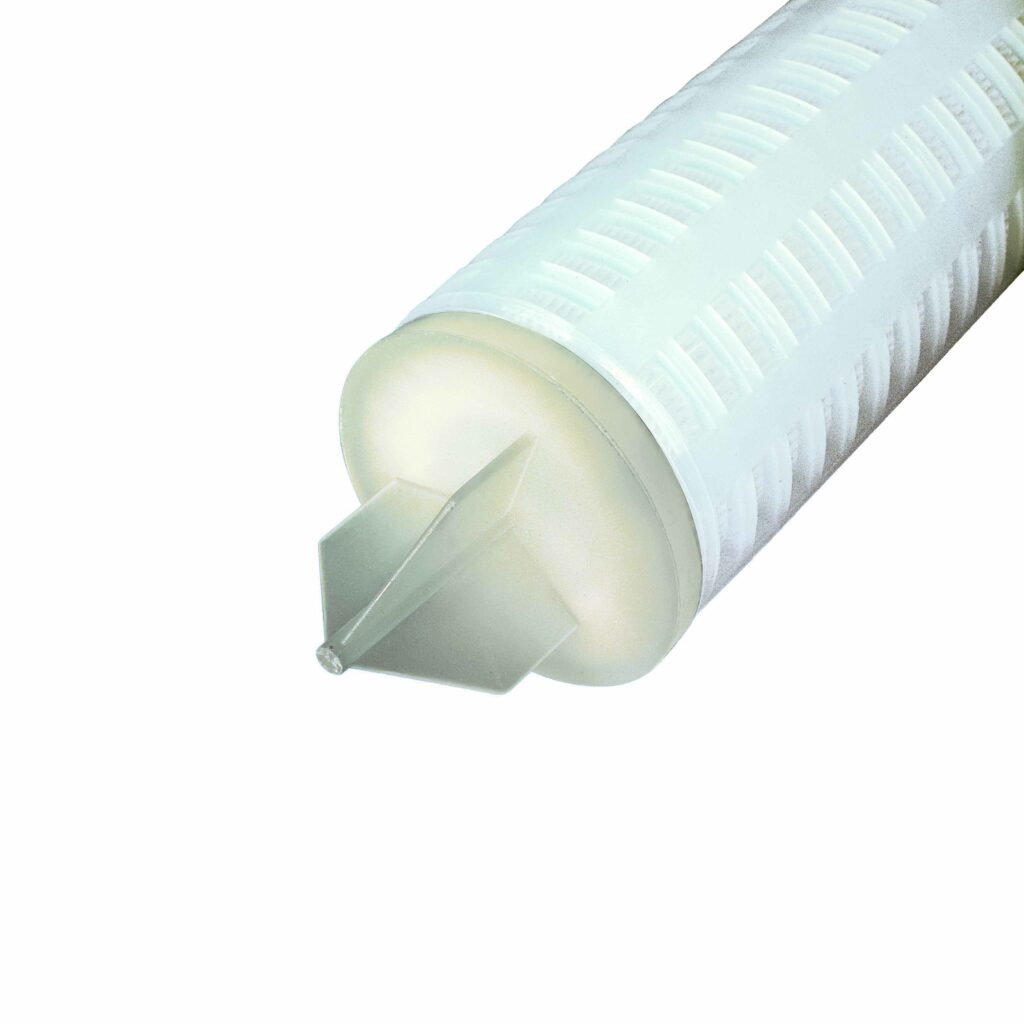
222 or 226 with FIN (Code 3 or Code 7 Filter Cartridge)
This cap type has an opening on the seal end. The FIN on the other end is to help cartridges align and center in the cartridge vessels/housing.
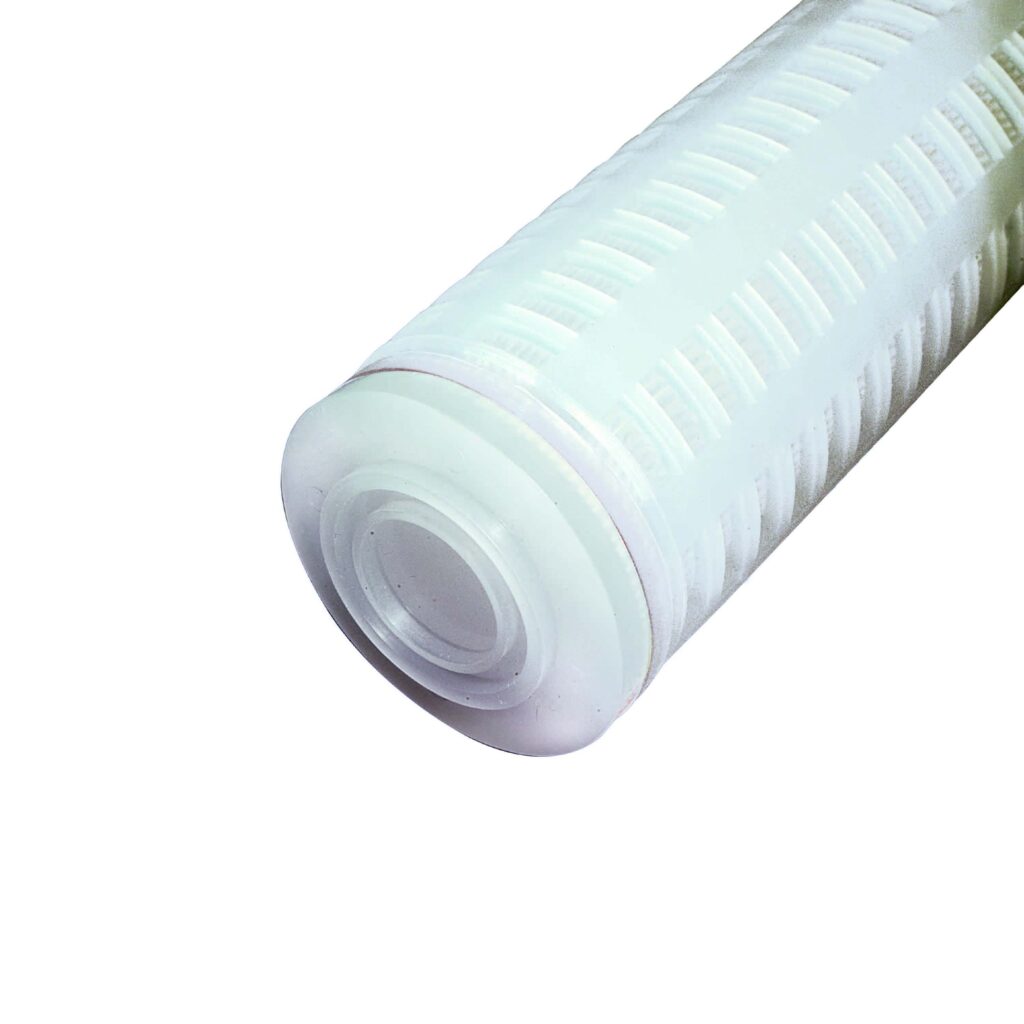
222 or 226 with Flat Cap (Code 4 or Code 6 Filter Cartridge)
This cap type has an opening on the seal end. The flat on the other end is to help the cartridges seal and secure against the hold-down plate.
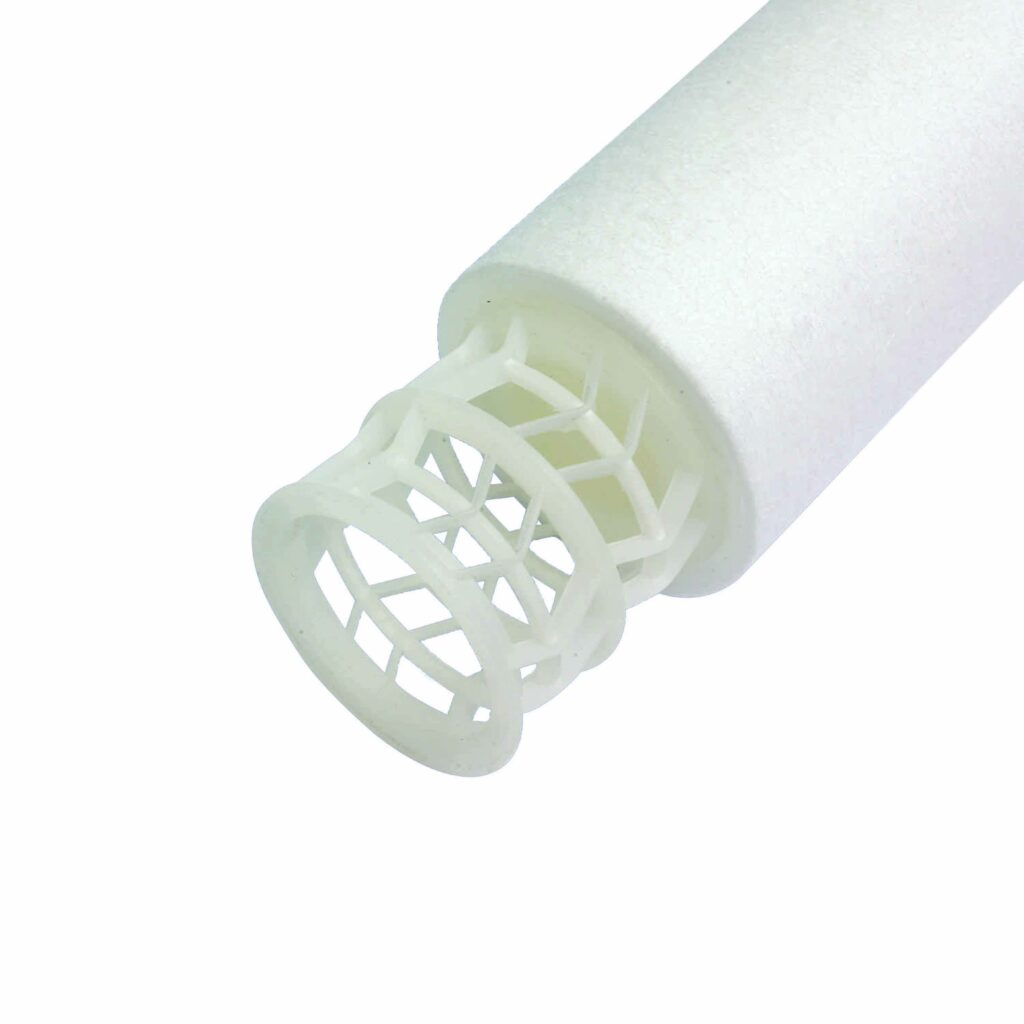
222 or 226 with Spring (Code 5 or Code 8 Filter Cartridge)
This filter has one end with a spring, which compresses against a hold-down plate or flat lid when installed allowing for easier installation, and securing the filter in place. The opening side has a 222 or 226 opening (see above).
These are the typical offerings, Global Filter also offers an SOE 213 o-ring (type 16) which fits most plastic housings that accept DOE elements. It utilizes an internal o-ring instead of a flat gasket, which normally relies on a knife edge to create a positive seal inside the vessel. Another end-cap offering from Global Filter is a 222 with 3 locking tabs and a FIN (type 28) that is used to help lock the cartridge into place and ensure a proper fit and seal in the vessel.
Liquid Filter Cost Considerations
Lastly, it is important to consider the cost of the filter, which includes the materials and costs associated with maintenance and replacement. The actual cost of the filter may seem minimal when you take into account the total cost of ownership. A filter that requires frequent replacements and is not as efficient may end up costing more in the long run than a more expensive, but durable and efficient filter that provides more capacity. For example, bag filters are much cheaper but tend to have shorter service life than cartridge filters.
In conclusion, selecting the right industrial liquid filter is crucial for ensuring the quality and purity of liquids in your manufacturing process. Proper selection can ensure products meet industry standards and protect expensive process machinery. By considering the type of liquid, filtration requirements, type of filter, filter material, existing system fit, and cost, you can choose a filter that meets your specific needs and provides efficient and cost-effective filtration.
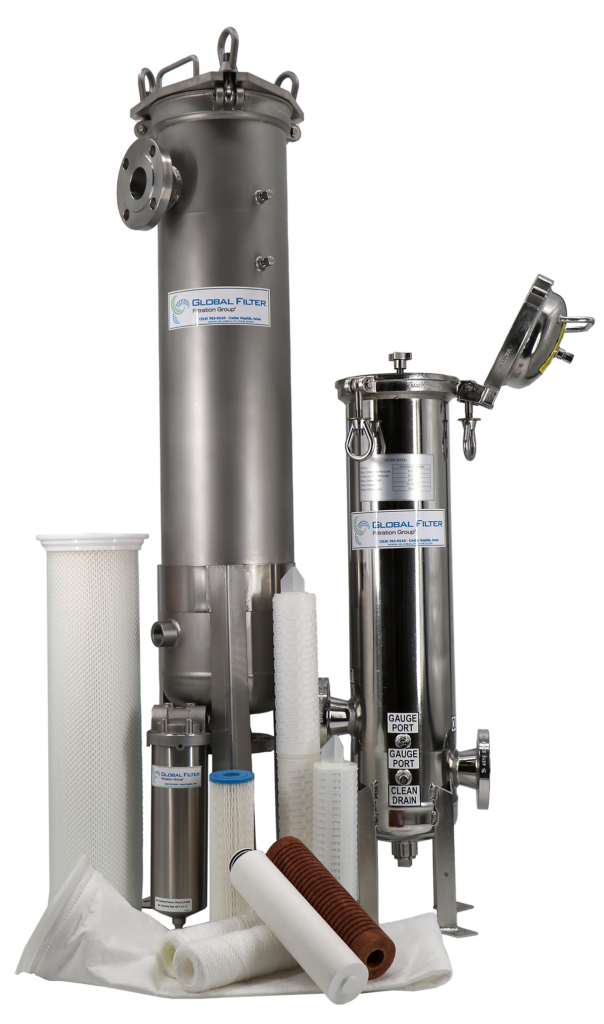
To Contact Our Technical Experts

